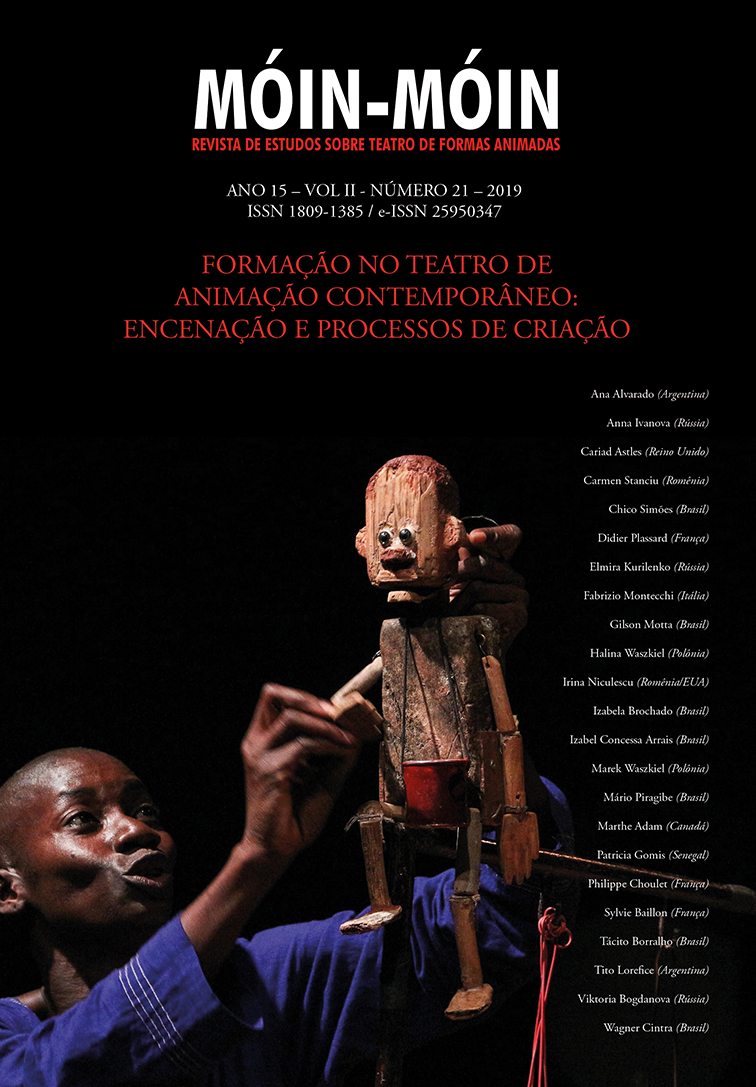Theatre of the Animated Form
DOI :
https://doi.org/10.5965/2595034702212019222Résumé
The article includes some reflections on terms “animant” and “animated
form”. The “animant” denotes any object, material or immaterial (e.g. a shadow), which is submitted by an artist to the process of animation. It can be useful in our contemporary discussions. The term “animated form” is used very often, but not precise. It has become dangerously capacious. It is coming to denote all the actor’s onstage actions. Essentially, in order for the “animation” to occur, it must refer to something that in itself is not alive, and thus – regardless of the convention of its application – it certainly does not refer to human beings. An actor on the stage is unquestionably a living creature, so he/she is not an “animated from”. If puppet theatre wants to march in the artistic avant-garde instead of dragging behind with the epigones, it must focus on the issue which constitutes its core and its greatest merit: on the art of animation and on the phenomenon of the animant.The most important message that the theatre of the animated form conveys to the spectators concerns the issue of the boundary between the living and the dead, the animate and inanimate – and if animated, then why, how and wherefore. The miracle of animation is a cure to our anthropocentrism and egotism. On condition, of course, that we are able to lend a piece of our own life to a created object, a thing which in itself has no life: to a puppet.
Téléchargements
Téléchargements
Publiée
Comment citer
Numéro
Rubrique
Licence
(c) Tous droits réservés Móin-Móin - Revista de Estudos sobre Teatro de Formas Animadas 2019

Ce travail est disponible sous la licence Creative Commons Attribution 4.0 International .
Ao submeter um artigo à Móin-Móin Revista de Estudos Sobre Teatro de Formas Animadas e tê-lo aprovado os autores concordam em ceder, sem remuneração, os seguintes direitos à Revista: os direitos de primeira publicação e a permissão para que a Revista redistribua esse artigo e seus metadados aos serviços de indexação e referência que seus editores julguem apropriados.
Os artigos cujos autores são identificados representam a expressão do ponto de vista de seus autores e não a posição oficial da revista Móin-Móin.
Plágio, em todas as suas formas, constitui um comportamento antiético de publicação e é inaceitável. A Revista Móin-Móin reserva-se o direito de usar software ou outros métodos de detecção de plágio para analisar os trabalhos submetidos.
![]()
Este obra está licenciado com uma Licença Atribuição-NãoComercial 4.0 Internacional






